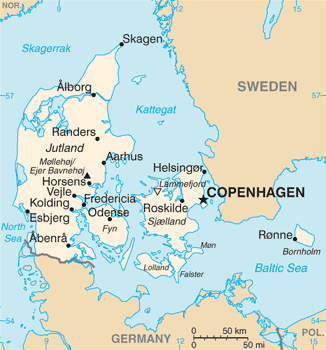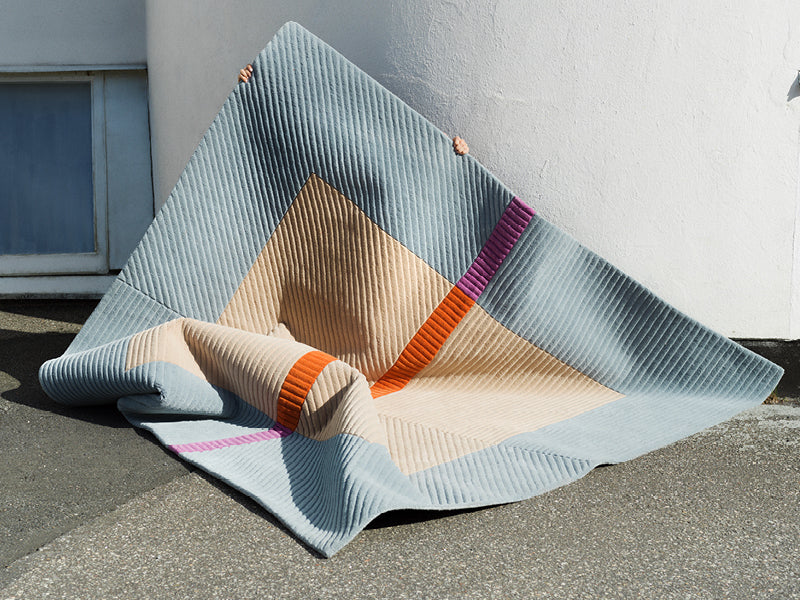Let's go back a few centuries or so. Of the five Scandinavian countries, Denmark has the strongest heritage when it comes to furniture making. Starting in the late 1700's, The Royal Academy of Fine Arts hosted craft-based curriculum. At this time, there was a Royal Furniture Emporium, a marketplace for skilled craftsmen to show their work. This begins the story of the craftsmanship that we know to be synonymous with Danish furniture.
In the 1800's, the Danes started specialized craft schools, showing work throughout London and Paris exhibitions. In 1907, the Danish Society for the Arts and Crafts was established.
Into the 20th Century
In the first 20 years of 1900s, Danes were producing high quality furniture, but not in the style we have today. Danes created works that looked similar to the current European styles of Baroque, Rococo, and Neoclassical.
Many historians agree that the roots of modern Danish furniture trace back to 1924. At the Academy of Fine Arts in Copenhagen, a new department emerged: the Department of Furniture and Interior Decoration. Kaare Klint, architect and designer, directed the department. Today, Kaare Klint is known as the father of modern Danish Design. During his time as a professor, he inspired some of the greatest Danish furniture designers and architects – including Hans J. Wegner, Mogens Koch, Arne Jacobsen and Poul Kjærholm.
Into the 1930s, new housing with smaller rooms created demand for simple, well-proportioned furniture. Danish designers also began to look at everyday object design. At the same time, the Danish Export Council encouraged designers to make moderate-priced furniture. This began the concept of the "knock-down" furniture which could be disassembled for shipping. (The Swedes were doing the same thing, hi IKEA!)
The Beginning of Danish Modern
Danish furniture makers were really more concerned with the actual craftsmanship, rather than coming up with a unique design. The Cabinetmakers Guild, an association of small workshops, began to schedule annual exhibitions as a means of promoting their businesses and skills. In the first years of 1927-1939, the show was focused on pure craftsmanship. However, in the beginning of 1939, design competitions started occurring before the main event. These new competitions spurred the idea of Danish Modern furniture. The cabinetmakers would go on to make models of the winning entries to showcase during the exhibition.
These winning entries would feature the designer's name as well as the craftsman to symbolize equal partnership. Designers then began using the shows as opportunities to find producers for their work. These exhibitions became showplaces for exemplary craftsmanship and design.
Well-known designers like Hans Wegner, Finn Juhl, Mogens Koch, Peter Hvidt, Grete Jalk, and Borge Mogensen began their careers at the Cabinetmakers Guild exhibitions. Many of these designers started as trained cabinetmakers, so they could transform their own individual ideas.
These designers favored natural materials, simple forms, and no ornaments. Danes were unique in that they often imported teak wood from Thailand or rosewood from Brazil. The color palettes were rich and warm hues of brown. The decorative grains in these woods gave the furniture an elegant look.
Post World War 2
Following their occupation of Nazi Germany, the Danish were keen to start a new era in furniture making. Danish furniture was becoming synonymous with Scandinavian quality. The Danes resisted the temptation to stay on trend or change after their newfound success, which is seen as the beginning of their decline.
The industrialization of the furniture business in the 1960s ended the cabinetmaker and designer collaborations. Many of the cabinetmaker businesses had begun to close.
In 1968, House Beautiful devoted an entire issue to the celebration of Scandinavian Design. Many felt that the style had already peaked and a new waves were happening in Italy like the Italian Design Movement.
1970s to 2000
In the 1970s, Nordic design fell from the trends list. Many economic factors influenced this as well. In Denmark, marketing and promotion budgets were severely cut. It was under the assumption that the promotion was not necessary due to their previous success.
By the mid-1980s, all of the Nordic countries were doing a major push to get back into the competitive market. Exhibitions were popping up in major cities throughout the US. In 1985, New York City's Bloomingdales features "Style Scandinavia" to showcase design from all five countries. That same year, IKEA opened up its first store in America. The Danes were exclusively focusing on introducing bold and linear silhouettes directed to the contract market.
In the 1990s, many furniture producers were building export markets for contract furniture. The Danish Technological Institute made a breakthrough in bending compressed wood under heat and pressure. This lead to more chairs that could be thinner, stackable, and lightweight.
And Today...
Today, we are in the third generation of Danish designers. They are less likely than other Scandinavian designers to seek education outside of Denmark. Many begin their career studying woodworking to gain understanding of how objects are made.
Since the resurgence of twentieth century furniture, many classic Danish designs have returned to production. Many Americans are importing furniture directly from Denmark to resell on the vintage market.
Why have Danish Design today?
There are many benefits to buying vintage Danish furniture or new productions of classic designs. The aesthetics of these works are in the cleanliness of the design and the natural beauty of the materials. In new production, we often see ash, walnut, elm, or oak wood. Rosewood is no longer able to be used due to extinction in Brazil.
Danish furniture is crafted with a person’s size and his or her living environment in mind. None of the Danish designs feature bulky legs or take up unnecessary space.
If you favor a minimal design and utilitarian roots, Danish furniture is the way to go!













